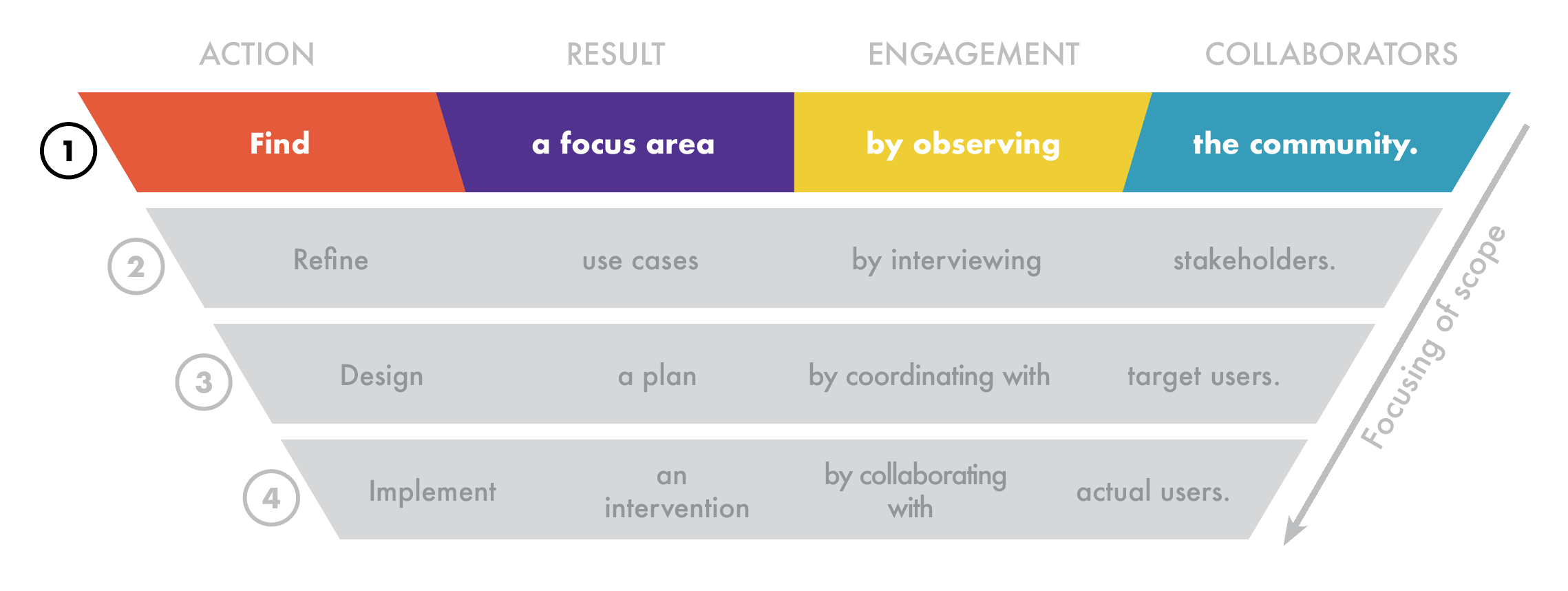Step 1: Find
- THE ACTION: Identify a general focus area with potential opportunities for the community use of open data.
- THE ENGAGEMENT: Observe, listen to, and analyze community needs.
- THE COLLABORATORS: A broad group of community members who can illuminate potentially impactful focus areas.
- THE RESULT: A focus area where community voices and needs suggest impactful opportunities for the community use of open data.
The first step in TDE is listening to your community’s priorities and concerns, and identifying the issue areas where open data might help. You may already be listening to residents’ concerns and needs by conducting surveys, maintaining relationships with trusted community groups, or regularly joining community meetings. Use each opportunity you have to collect and analyze broad community interest in open data. This is an opportunity to pay attention to any communities that are missing or excluded from conversations about public data and decision-making.
As you listen to and observe the community’s needs, identify opportunities where public data or information would empower residents to better understand, address, or collaborate to solve their concerns. Observe whether a majority of promising opportunities for the use of open data are clustered around a single issue or focus area. After listening to a variety of challenges that might require the community use of open data, choose a focus area by aligning those opportunities with the city’s on-going strategic priorities as well as with the cities information holdings.
Tactics to help you find a focus area:
| TACTIC | DESCRIPTION |
|---|---|
| Identify shared priorities | Ask a broad swath community members which issues they care about most. Are any of these priorities in alignment with City Hall’s strategic goals? Areas of overlap are a good place to start, with built-in support from both the city and community stakeholders. |
| Analyze data/ information requests | Formal or informal channels where residents or data users submit requests for data, information, files, or services can provide ideas about what’s on residents’ minds. Public records requests, requests for datasets, or even 311 calls logs are potential places to look. Choose a focus area based on the most common types of requests. |
| Identify valuable partners | Look for partners in the community with whom your agency has contracts, data-sharing agreements, or other similar trusted relationships — for example, partners who receive government grants. Issues of importance to these partners may be impactful focus areas for their (or their stakeholders’) use of open data. |
| Join public meetings | Attend community meetings where residents voice their concerns. Listen in at multiple meetings, document conversation, and determine whether concerns center around a focus area. Think about whether residents need support in using open data or information to address that focus area. |
| Map impactful focus areas | Study which focus areas other governments have had success addressing through the community use of open data and whether you can partner with them, learn from them, or replicate their solutions. Using this tactic means you’ll have to ensure that focus areas important in similar places are important to your community’s residents. |